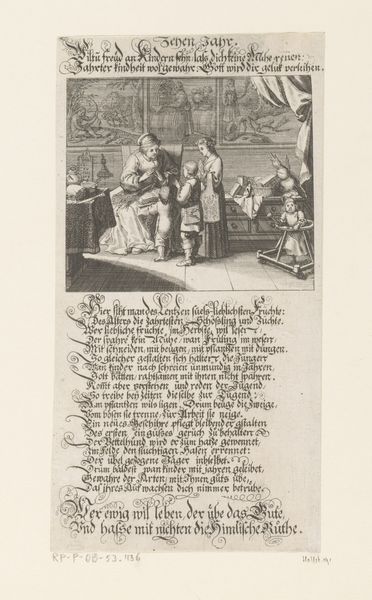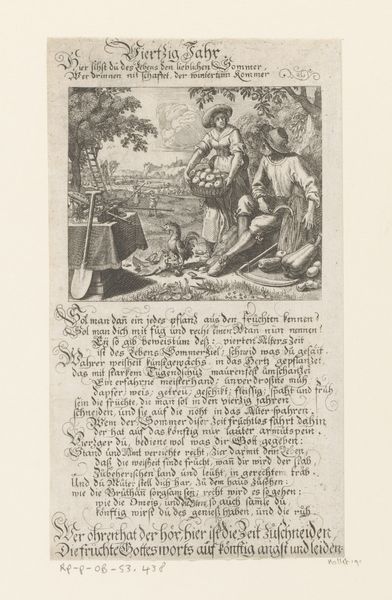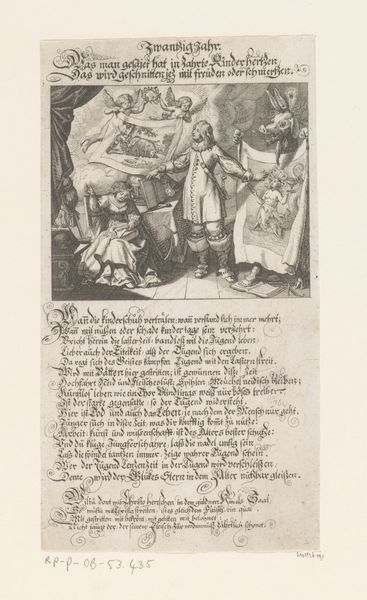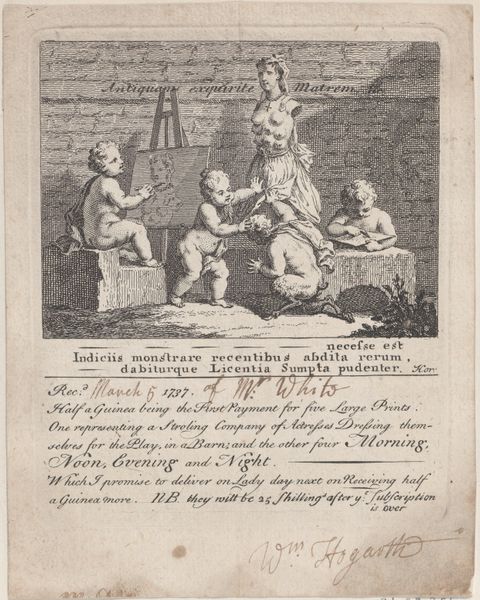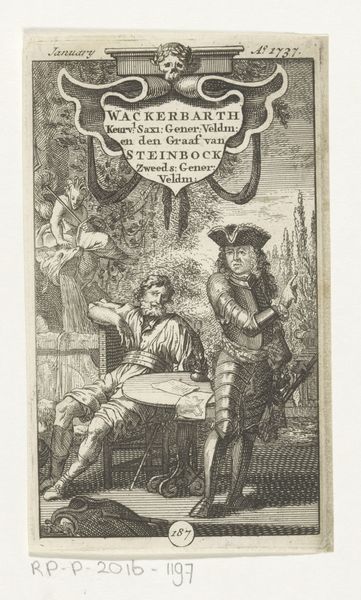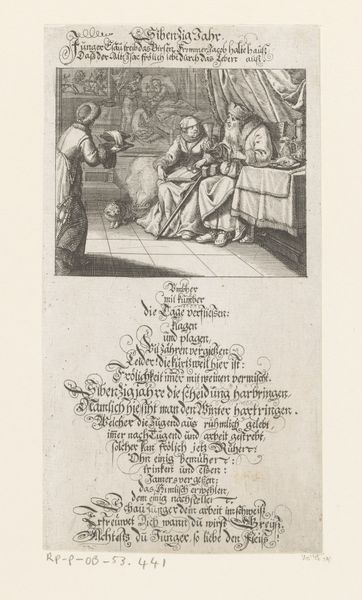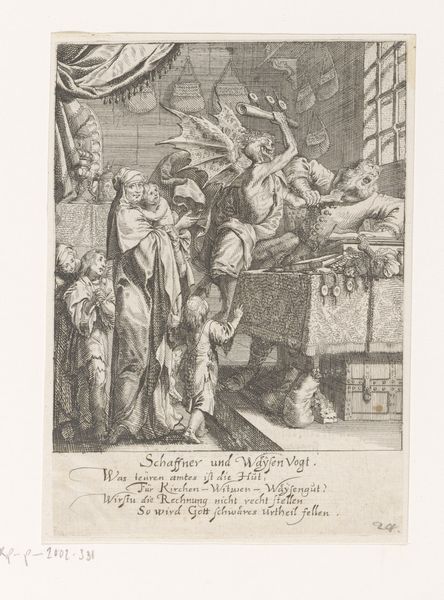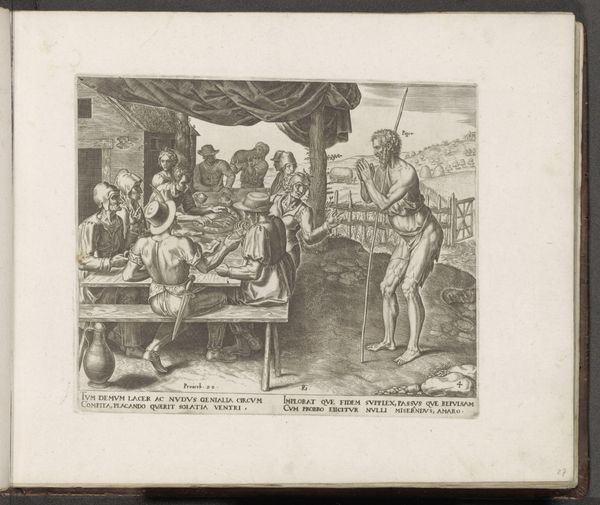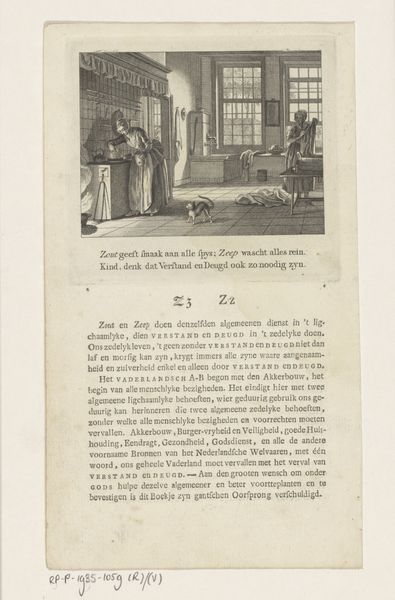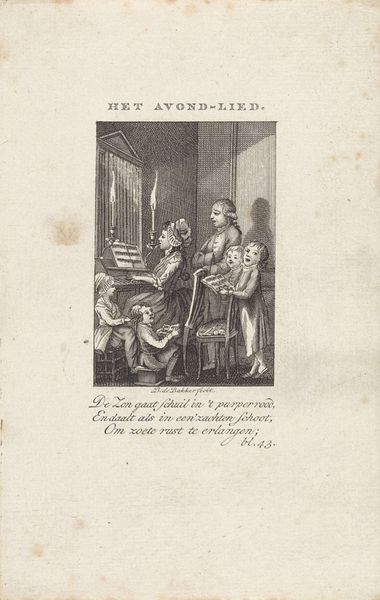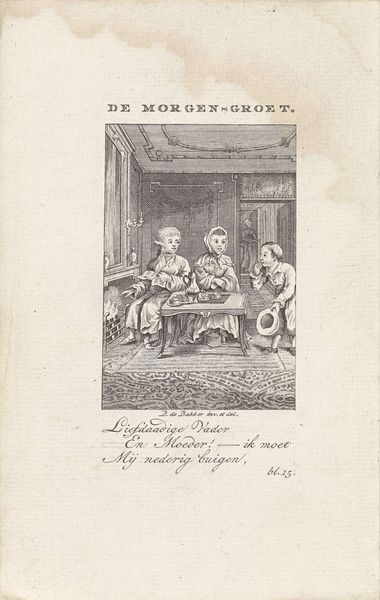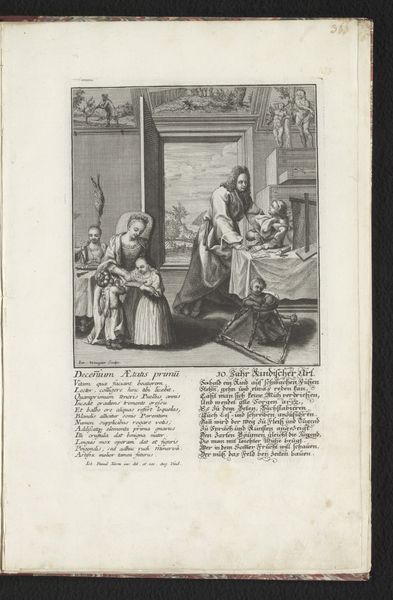
Dimensions: height 230 mm, width 130 mm
Copyright: Rijks Museum: Open Domain
Curator: Here we have an engraving from 1675 by Conrad Meyer, currently residing at the Rijksmuseum. It is titled "Bejaard echtpaar wordt door de dood meegenomen," which translates to "Elderly couple being taken by death." Editor: My immediate reaction is of a very graphic domestic scene, almost painfully intimate. The stark monochrome and precise lines give it an almost clinical feel, yet the subject matter is intensely human. What do you make of the figures in the scene? Curator: Given the title, we can interpret this artwork as a visual momento mori, reflecting on the themes of mortality and the transience of life, which were common in art during this period. It is also possible to consider this intaglio print, a Baroque example, as an allegory and history painting through a narrative lens. Death as a concept has undergone serious changes during and after this work. The notion of dying at home changed quite significantly. Editor: It's striking how Death isn’t depicted as a fearsome figure here, but more as a matter-of-fact presence. He seems almost gentle as he leads the couple away. This portrayal suggests a particular cultural understanding of death, doesn't it? What sort of psychological preparation did Meyer perhaps try to trigger in the viewer? Curator: Indeed. During this time, it was vital for people to create their own death narratives, especially since these intertwined with familial relationships and dynastic concerns. Therefore, art could create a safe space where people can examine the emotionality of the moment, process personal loss, and learn how the loss and redistribution of social power will follow a person’s death. Editor: Thank you. Considering that shift in cultural memory that you've highlighted really changes my perception of this piece, moving away from a mere depiction of mortality to one of negotiation, of navigating social roles. Curator: My pleasure. Exploring the socio-political function behind the iconography reveals further potential for examining individual and group behaviours. That shift in perception—that's why we do this.
Comments
No comments
Be the first to comment and join the conversation on the ultimate creative platform.
